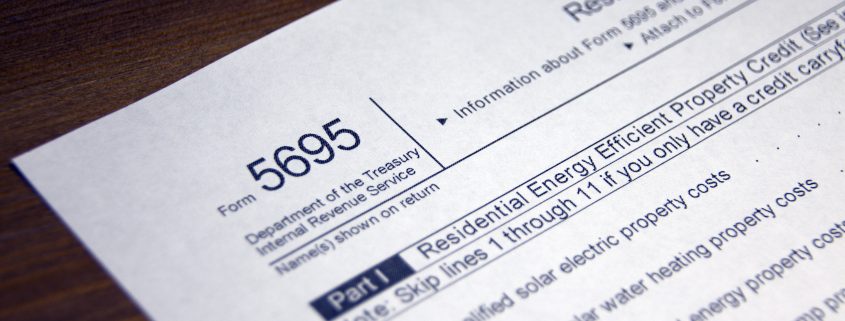Filing for Residential Energy Tax Credits: What you Need to Know
When you are qualified to claim the non-business energy property credit or the residential energy- effective property credit, you will have to complete the IRS Form 5695. This is a simple form which is found online with all the detailed information.
Non-business Energy Property Credit
The non-business energy property credit will allow you to reduce the tax bill for some of the energy-efficient improvements or changes you did in your house. The tax credits might equal 10% of the costs with $500 total lifetime credit and $200 limit for a window portion.
These costs might include the purchase price and installation charges for efficient heating and air conditioning systems, water heaters and stoves that run on biomass fuel. Besides, you can ask for a credit for the purchase of energy-efficient doors, windows, skylights, certain roofs and the cost of increasing insulation in the home. But, be careful because you are not allowed to include the costs of the equipment used for the installation.
Residential Energy-Efficient Property Credit
On the other hand, you can also claim the residential energy-efficient property credit by completing the same form (Form 5695) if you have alternative energy equipment at home.
This credit is equal to 30% of the number of costs you had on purchasing and installing solar electric systems, geothermal heat pumps, solar water heaters, wind turbines and fuel cell property. Before buying any equipment, it would be wise to check the manufacturer’s tax credit certification statement to ensure these products are qualified for the credit.
Main Home
The principal difference between these two lines of credits is that the residential energy credit is just for the improvements you can make to any of your houses, no matter if it is your principal residence or a vacation one, but the non-business energy property credit is only for the improvements you made to your main house.
It is understood as main home the place where you live most of your time; it includes houses, houseboats, cooperative apartments, condominiums and even mobile homes. If you have more then one and you spend the same amount of time in each of them, you would only claim this credit for only one of them.
Reduce Tax Basis
To claim any of these credits, you would have to reduce the tax basis of your home by a total amount equal to both credits. This tax basis of your house is mainly the price you paid or the money you spent to construct it.
In general, terms, lowering the basis might increase the gain or reduce the loss that you are supposed to report when selling the home. Its reduction is not likely to have adverse tax consequences since the tax law is up to $250,000 of gain from the sale of the house. Just in case, you should keep a copy of the form 5695 until you sell it.
For further information or inquiries, visit our webpage or contact us. We are willing to help you with this matter or any problem that you come across.



